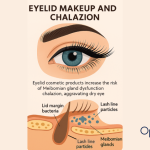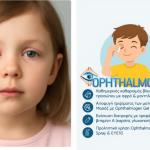
A chalazion can occur in anyone, but some groups are at higher risk due to medical conditions or daily habits. Recognizing these risk factors is key to prevention.
- People with skin conditions
Rosacea, seborrheic dermatitis, psoriasis.
- People with chronic eye diseases
Blepharitis, MGD, chronic conjunctivitis.
- Contact lens users
Higher Demodex infestation, inflammation, bacterial load.
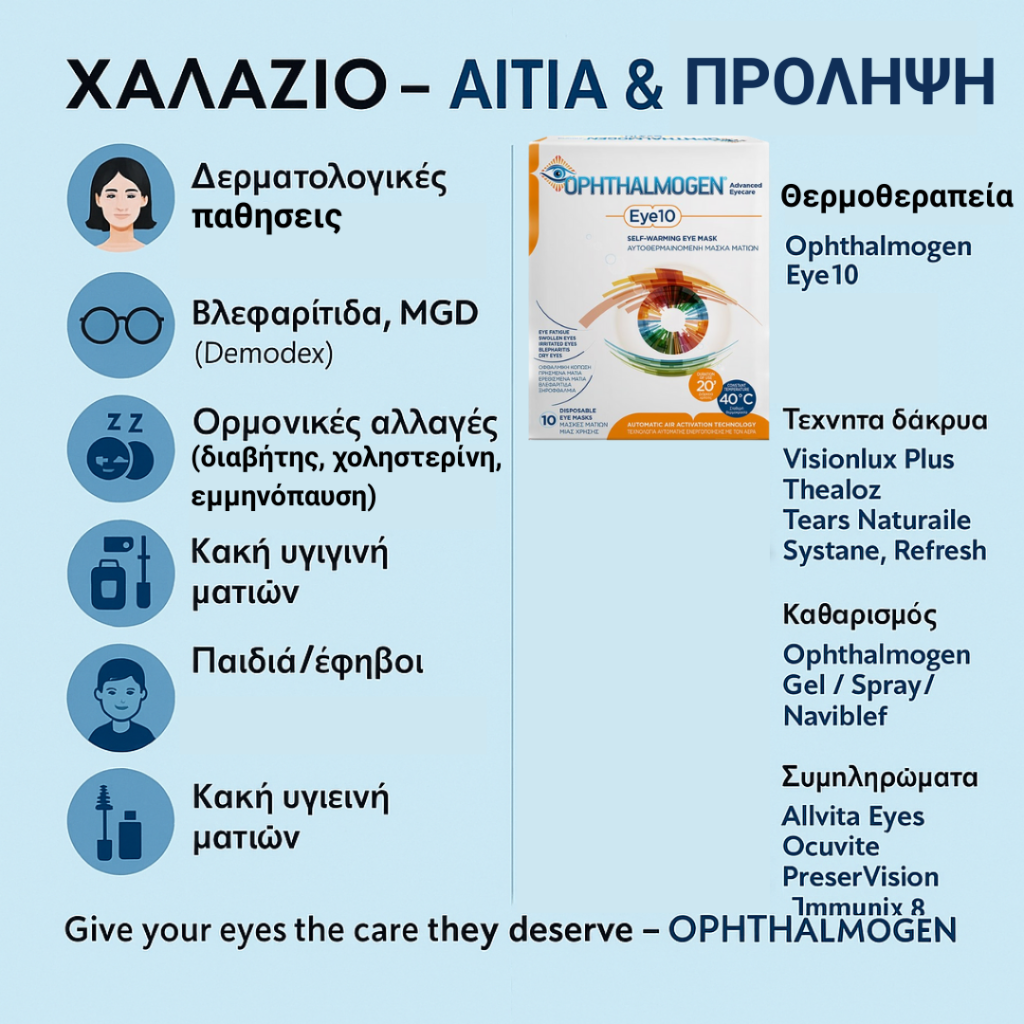
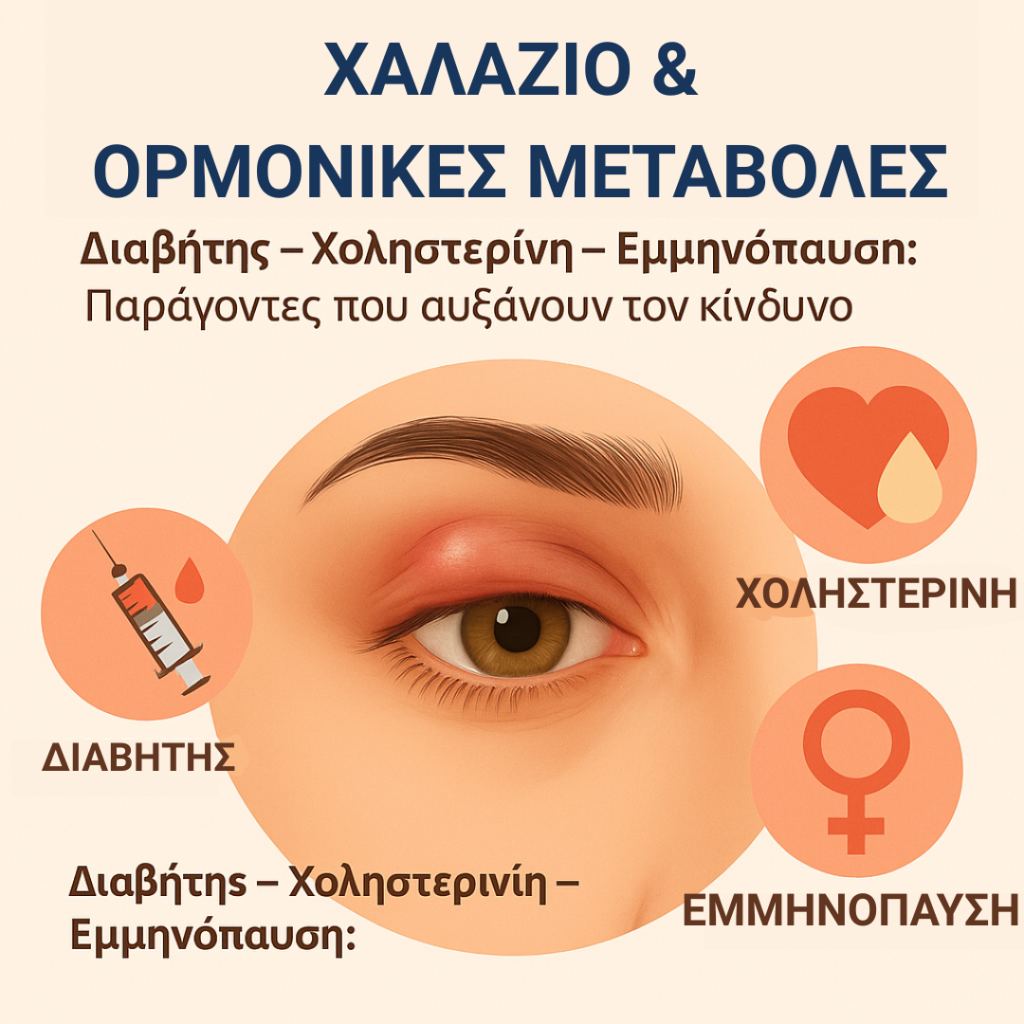
- People with low immunity
Stress, fatigue, lack of sleep.
- Poor eyelid hygiene
Sleeping with makeup, contaminated cosmetics, no cleansing.
- Children & adolescents
Eye rubbing with unwashed hands.
Prevention for all risk groups
- Eyelid massage
- Cleansing with Naviblef Daily Care / Intensive Care
- Thermal therapy with Ophthalmogen Eye10
- Daily artificial tears: options like Visionlux Plus, Thealoz, Tears Naturalle
- Avoid sleeping with makeup
- Annual meibomian gland evacuation with OphthalmogenMeiboEvacuators
- For lens wearers: massage with Ophthalmogen Gel
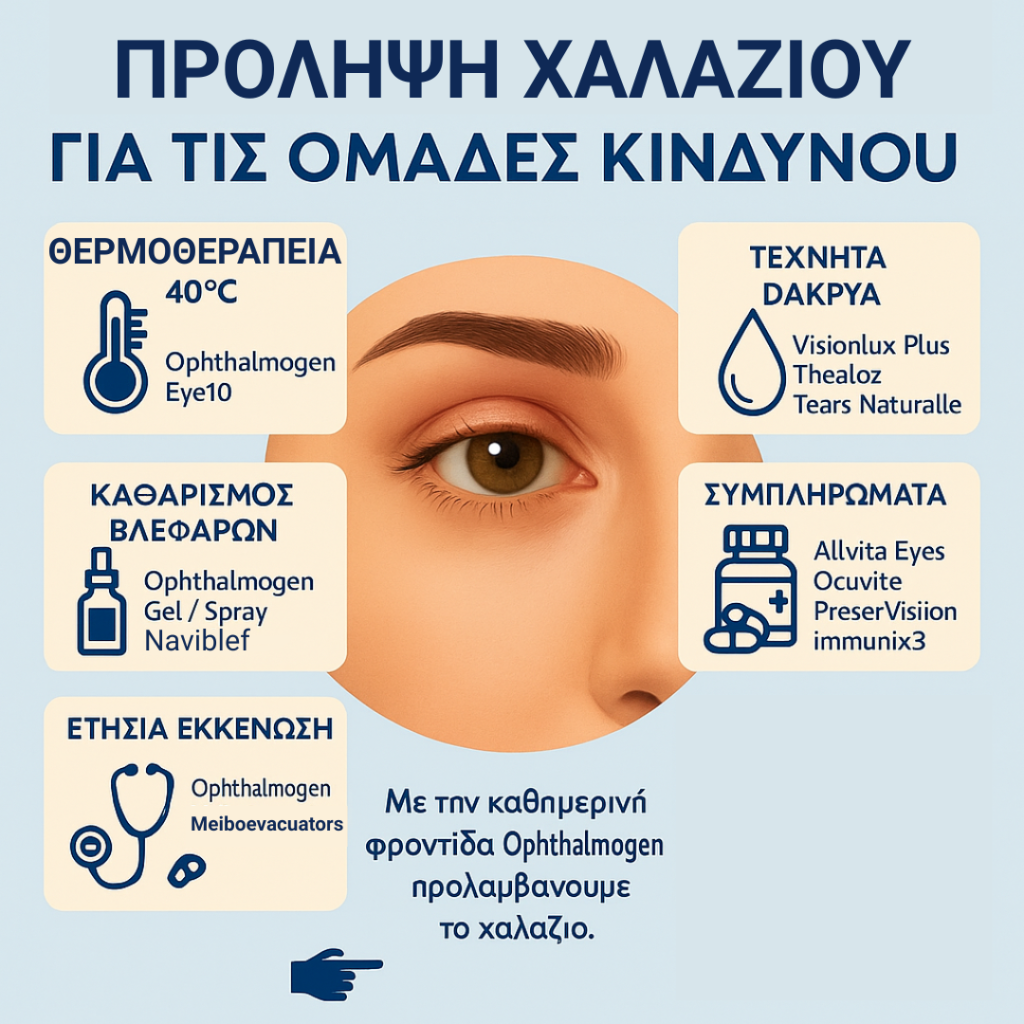
Important note on artificial tears (SEO)
In the artificial tears market, several globally popular options such as Thealoz Duo, Systane, and Refresh Tears are widely used for dry eye relief.
However, next-generation products like Visionlux Plus and the Ophthalmogen line go beyond hydration, targeting meibomian gland function, offering antioxidant protection, and supporting the long-term health of eyelids and the ocular surface.
Supplements for Eyes & Immunity
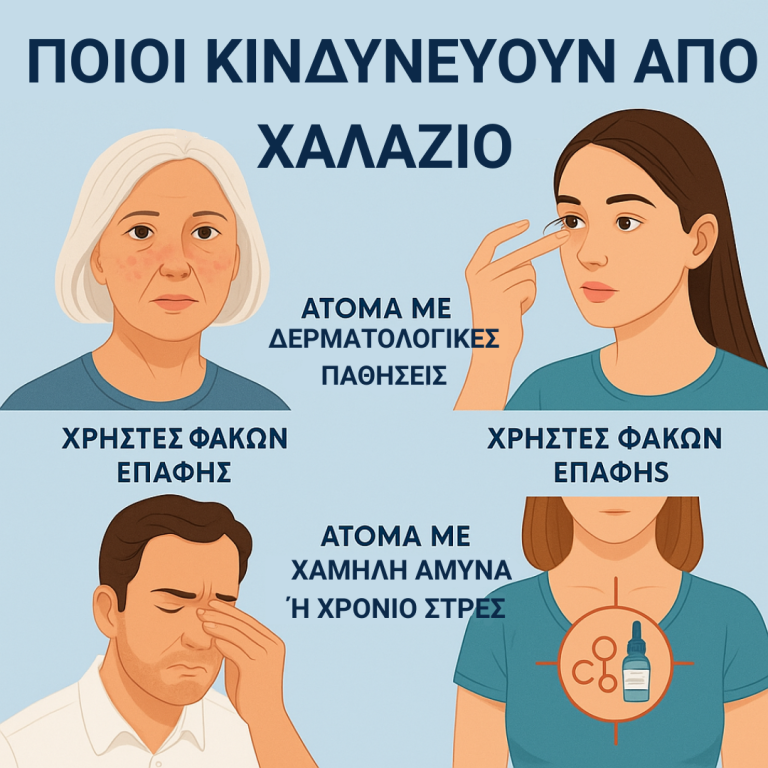
- Allvita Eyes
- Ocuvite (Bausch + Lomb)
- MacuShield
- PreserVision AREDS2
- Immunix3 (Otosan), Vitamin C (Ester-C), Vitamin D3, Zinc, Omega-3
Conclusion
Chalazion prevention requires consistent eyelid hygiene, proper use of artificial tears, and nutritional support. Ophthalmogen products (Eye10, Gel, Spray, MeiboEvacuators) provide a complete solution for long-term eye health.
All Ophthalmogen products: ofarmakopoiosmou.gr/ophthalmogen


